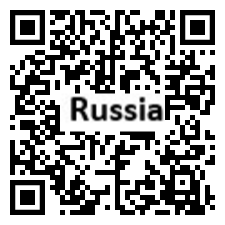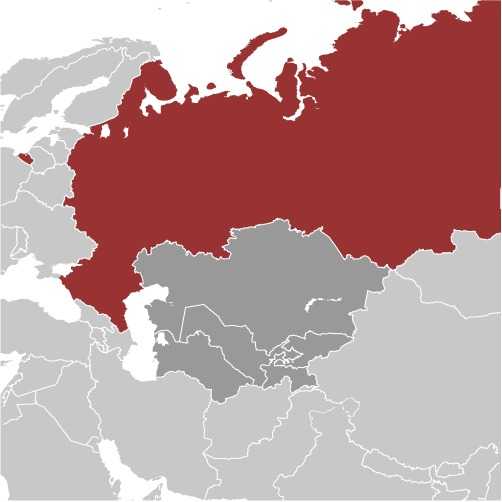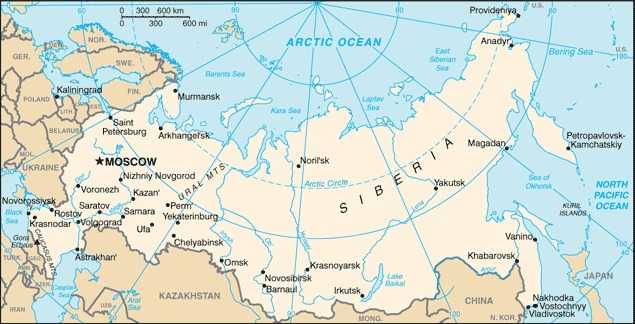Introduction
Background
Under PETER I (1682-1725), the Principality of Muscovy expanded and became the Russian Empire. The Romanov dynasty was overthrown in 1917, ushering in communism and the formation of the Union of Soviet Socialist Republics (USSR). The USSR collapsed in 1991, and after a period of political and economic turmoil, Russia shifted toward a centralized, authoritarian state under President Vladimir PUTIN (2000-2008, 2012-present).
Geography
Area
total : 17,098,242 sq km
land: 16,377,742 sq km
water: 720,500 sq km
Climate
ranges from steppes in the south through humid continental in much of European Russia; subarctic in Siberia to tundra climate in the polar north; winters vary from cool along Black Sea coast to frigid in Siberia; summers vary from warm in the steppes to cool along Arctic coast
Natural resources
wide natural-resource base including major deposits of oil, natural gas, coal, and many strategic minerals, bauxite, reserves of rare earth elements, timber
People and Society
Population
total: 140,820,810
Ethnic groups
Russian 77.7%, Tatar 3.7%, Ukrainian 1.4%, Bashkir 1.1%, Chuvash 1%, Chechen 1%, other 10.2%, unspecified 3.9% (2010 est.)
Languages
Russian (official) 85.7%, Tatar 3.2%, Chechen 1%, other 10.1%; note - data represent native language spoken (2010 est.)
Religions
Russian Orthodox 15-20%, Muslim 10-15%, other Christian 2% (2006 est.)
Population growth rate
-0.49% (2024 est.)
Government
Government type
semi-presidential federation
Capital
name: Moscow
Executive branch
chief of state: President Vladimir Vladimirovich PUTIN (since 7 May 2012)
head of government: Premier Mikhail Vladimirovich MISHUSTIN (since 16 January 2020)
Legislative branch
description: bicameral Federal Assembly or Federalnoye Sobraniye consists of:
Federation Council or Sovet Federatsii (170 seats statutory, 169 as of April 2023; 2 members in each of the 83 federal administrative units (see note below) - oblasts, krays, republics, autonomous okrugs and oblasts, and federal cities of Moscow and Saint Petersburg - appointed by the top executive and legislative officials; members serve 4-year terms)
State Duma or Gosudarstvennaya Duma (450 seats (see note below); as of February 2014, the electoral system reverted to a mixed electoral system for the 2016 election, in which one-half of the members are directly elected by simple majority vote and one-half directly elected by proportional representation vote; members serve 5-year terms)
Economy
Economic overview
natural resource-rich Eurasian economy; leading energy exporter to Europe and Asia; decreased oil export reliance; endemic corruption, Ukrainian invasion, and lack of green infrastructure limit investment and have led to sanctions
Real GDP (purchasing power parity)
$5.816 trillion (2023 est.)
$5.614 trillion (2022 est.)
$5.732 trillion (2021 est.)
Real GDP per capita
$39,800 (2023 est.)
$38,300 (2022 est.)
$38,900 (2021 est.)
Agricultural products
wheat, sugar beets, milk, barley, potatoes, sunflower seeds, maize, soybeans, chicken, pork (2022)
Industries
complete range of mining and extractive industries producing coal, oil, gas, chemicals, and metals; all forms of machine building from rolling mills to high-performance aircraft and space vehicles; defense industries (including radar, missile production, advanced electronic components), shipbuilding; road and rail transportation equipment; communications equipment; agricultural machinery, tractors, and construction equipment; electric power generating and transmitting equipment; medical and scientific instruments; consumer durables, textiles, foodstuffs, handicrafts
Exports
$465.432 billion (2023 est.)
$640.709 billion (2022 est.)
$549.717 billion (2021 est.)
Exports - partners
China 21%, India 8%, Germany 6%, Turkey 5%, Italy 5% (2022)
Exports - commodities
crude petroleum, natural gas, refined petroleum, coal, fertilizers (2022)
Imports
$378.615 billion (2023 est.)
$347.384 billion (2022 est.)
$376.923 billion (2021 est.)
Imports - partners
China 39%, Germany 8%, Turkey 5%, Kazakhstan 5%, South Korea 3% (2022)
Imports - commodities
packaged medicine, broadcasting equipment, cars, garments, plastic products (2022)
Exchange rates
Russian rubles (RUB) per US dollar -
Page last updated: Wednesday, July 24, 2024




